In the intricate world of chess, every move holds the potential to shift the tides of the game. Imagine a battlefield where pawns march as foot soldiers, knights gallop with elegant precision, and queens reign supreme with strategic prowess. Welcome to the realm where each piece is not merely a token on the board but a formidable force waiting to be unleashed. In this ultimate guide to chess game pieces, we delve deep into the art of strategic warfare that unfolds upon the 64 squares, revealing the hidden powers and tactical maneuvers that can lead you to victory. As you navigate through this comprehensive exploration, you will uncover the nuanced abilities of each chess game piece, from the humble pawn to the mighty queen. Discover how every move plays a crucial role in shaping the outcome of the game, and learn the art of leveraging your pieces to outmaneuver your opponent. Whether you are a novice player seeking to grasp the fundamentals or a seasoned strategist looking to hone your skills, this guide is your gateway to mastering the intricate dance of chess game pieces. Prepare to immerse yourself in a world where intellect meets intuition, where foresight and calculation reign supreme, and where the slightest adjustment in positioning can tip the scales of victory in your favor.
Contents
- The Power of Pawns: Understanding Their Role in the Game
- Knights: Maneuvering with Precision and Finesse
- Bishops: Unleashing Diagonal Dominance on the Board
- Rooks: Mastering the Open Files and Ranks
- The Queen: Crowned as the Most Powerful Piece
- Kings: Protecting the Monarch at All Costs
- Strategic Coordination: Creating Synergy Among Your Pieces
- Sacrificial Tactics: Knowing When to Exchange Pieces for Advantage
- Endgame Mastery: Leveraging Your Pieces for Victory
- Conclusion: Harnessing the Strategic Power of Chess Game Pieces
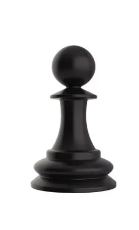 The Power of Pawns: Understanding Their Role in the Game
The Power of Pawns: Understanding Their Role in the Game
At the forefront of every chess game, we find the pawns, the foot soldiers that form the first line of defense and offense. While they may seem insignificant compared to their more powerful counterparts, pawns possess a unique set of attributes that make them essential to any successful strategy.
One of the key strengths of pawns lies in their ability to control the center of the board. By advancing one or two squares from their starting position, pawns create a barrier that restricts the opponent’s pieces and limits their mobility. This control over crucial squares allows players to develop their other pieces with greater ease and establish a solid foundation for future attacks.
Pawns also play a vital role in pawn structures, which refer to the arrangement of pawns on the board. Different pawn structures can dictate the overall flow and dynamics of a game. For example, an isolated pawn, one without neighboring pawns on adjacent files, can become a weakness if not properly protected. On the other hand, connected pawns can provide mutual support and create strong defensive positions.
Furthermore, pawns have unique capturing rules. They can only capture diagonally forward, which adds an element of strategy when engaging with opposing pieces. Players must carefully consider when and how to capture enemy pieces with their pawns, as it can lead to positional advantages or weaknesses.
In summary, while often underestimated due to their limited range of movement and attacking capabilities, pawns are fundamental chess game pieces that shape the course of a match. Their ability to control space on the board and influence pawn structures makes them invaluable assets in any player’s arsenal.
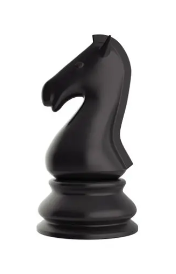 Knights: Maneuvering with Precision and Finesse
Knights: Maneuvering with Precision and Finesse
The knight is perhaps one of the most intriguing chess pieces, with its distinctive L-shaped movement pattern. Its ability to jump over other pieces grants it a unique advantage on the board, allowing for unexpected maneuvers and surprise attacks.
One of the knight’s strengths lies in its versatility. It can navigate both the center and the edges of the board with equal ease, making it an excellent piece for initiating attacks or defending key positions. The knight’s ability to control multiple squares simultaneously also makes it a valuable asset in cramped positions where other pieces may struggle to find effective moves.
Another crucial aspect of the knight’s power is its ability to fork enemy pieces. A fork occurs when a knight simultaneously attacks two or more opposing pieces, forcing the opponent into a difficult decision. This tactical maneuver often leads to material gain, as the opponent must sacrifice one of their captured pieces.
Furthermore, knights excel in closed positions where their long-range counterparts, such as bishops and rooks, may face obstacles. Their jumping movement allows them to bypass blockades and infiltrate enemy lines more easily. Knights can also be used effectively in conjunction with other pieces to create powerful combinations and threats.
In conclusion, knights are dynamic chess game pieces that possess unique movement capabilities. Their ability to maneuver with precision and finesse makes them indispensable assets in any player’s strategy.
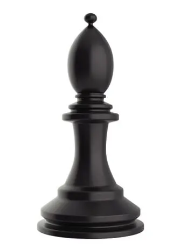 Bishops: Unleashing Diagonal Dominance on the Board
Bishops: Unleashing Diagonal Dominance on the Board
The bishop is a formidable chess piece that derives its strength from its diagonal movement pattern. Unlike other chess game pieces that move along straight lines or jump over others, bishops glide across the board with grace and power.
One of the key advantages of bishops lies in their long-range capabilities. They can traverse an entire diagonal line, controlling multiple squares simultaneously. This allows players to exert influence over vast areas of the board and create strategic opportunities for both attack and defense.
Another significant aspect of bishops is their ability to control squares of a specific color. Each player starts the game with two bishops, one on a light square and the other on a dark square. This distribution ensures that both players have access to bishops that can cover different areas of the board. It also means that bishops can work together harmoniously, complementing each other’s strengths and compensating for weaknesses.
Bishops are particularly effective in open positions where there are fewer obstacles hindering their movement. Their long-range attacks can be devastating, especially when combined with other pieces to create powerful pinning or skewering tactics. Additionally, bishops can play a crucial role in endgame scenarios, where their mobility becomes even more pronounced.
In summary, bishops are chess game pieces that dominate diagonals and possess immense strategic potential. Their long-range capabilities and ability to control specific colored squares make them invaluable assets in any player’s arsenal.
 Rooks: Mastering the Open Files and Ranks
Rooks: Mastering the Open Files and Ranks
The rook is a powerhouse among chess game pieces, renowned for its ability to dominate open files and ranks. With its horizontal and vertical movement pattern, the rook can traverse the entire length of the board, exerting influence over vast areas.
One of the primary strengths of rooks lies in their ability to control open files. An open file refers to a column on the board without any pawns obstructing the rook’s movement. When placed on an open file, rooks become formidable weapons capable of launching devastating attacks against enemy positions or infiltrating deep into enemy territory.
Rooks also excel at controlling ranks, which are horizontal rows on the board. By occupying key ranks, rooks can restrict opposing pieces’ mobility and limit their options for maneuvering effectively. This positional advantage often leads to tactical opportunities such as forks, pins, and skewers.
Another important aspect of rooks is their ability to coordinate with each other. When two rooks are placed on the same file or rank, they form a powerful tandem that can wreak havoc on the opponent’s position. This coordination allows for intricate tactical combinations and threats that can be difficult to defend against.
In conclusion, rooks are chess game pieces that excel in open positions and possess immense power when controlling files and ranks. Their ability to dominate large areas of the board makes them invaluable assets in any player’s strategy.
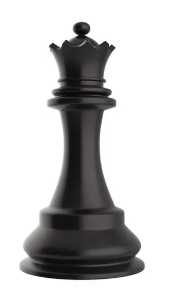 The Queen: Crowned as the Most Powerful Piece
The Queen: Crowned as the Most Powerful Piece
The queen is undoubtedly the most powerful chess piece on the board, capable of traversing both diagonals and straight lines with ease. Its versatility and range of movement make it a force to be reckoned with in any game.
One of the queen’s key strengths lies in its ability to control vast areas of the board simultaneously. With its long-range capabilities, the queen can exert influence over multiple ranks, files, and diagonals at once. This dominance allows players to launch devastating attacks or defend critical positions effectively.
Furthermore, queens are excellent pieces for launching intricate tactical combinations. Their ability to move both horizontally/vertically and diagonally opens up numerous possibilities for creating threats such as forks, pins, skewers, and discovered attacks. The queen’s versatility makes it an essential component in many winning strategies.
However, players must also exercise caution when using their queen aggressively. Overextending the queen or exposing it to potential attacks can result in losing valuable tempo or even losing the piece itself. Careful positioning and coordination with other pieces are crucial for maximizing the queen’s potential while minimizing risks.
In summary, queens are chess game pieces that reign supreme over the board due to their versatility and range of movement. Their ability to control vast areas and launch devastating attacks make them invaluable assets in any player’s arsenal.
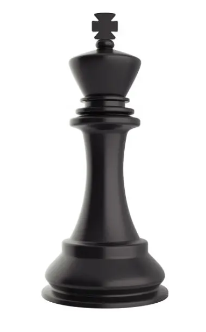 Kings: Protecting the Monarch at All Costs
Kings: Protecting the Monarch at All Costs
The king is the most crucial chess piece on the board, as its capture signifies the end of the game. While kings have limited mobility compared to other pieces, they play a pivotal role in both defense and offense.
One of the primary objectives in chess is to protect the king and ensure its safety. Players must carefully position their pieces to create a fortress around their monarch, shielding it from potential threats. This involves castling, a move that allows the king to find refuge behind a wall of pawns and a rook.
However, kings are not mere passive participants in the game. In fact, they can become active combatants during the endgame when fewer pieces are on the board. With fewer obstacles hindering their movement, kings can venture into enemy territory or support their own pawns in promotion races.
Additionally, kings can participate in tactical maneuvers such as checkmating patterns or stalemate traps. Their limited but essential role in offense adds an extra layer of complexity to chess strategies.
In conclusion, while kings may have limited mobility compared to other chess game pieces, they are central figures that must be protected at all costs. Their safety is paramount for any successful strategy, and their participation in endgames can often be decisive.
Strategic Coordination: Creating Synergy Among Your Pieces
In chess, success often hinges on how well players coordinate their pieces towards a common goal. Strategic coordination involves harmonizing different types of pieces’ strengths and leveraging them collectively for maximum impact.
One aspect of strategic coordination is piece development. Players must aim to develop their pieces efficiently, ensuring that each piece contributes to the overall strategy. This involves finding optimal squares for each piece and avoiding overcrowding or leaving pieces inactive.
Another crucial element is piece harmony. Different types of pieces have distinct strengths and weaknesses, and players must find ways to compensate for these limitations. For example, knights can cover the weaknesses of bishops in closed positions, while bishops can complement the long-range attacks of rooks in open positions.
Furthermore, strategic coordination often involves creating threats and forcing the opponent into defensive positions. By coordinating attacks from multiple angles or initiating tactical combinations, players can put pressure on their opponents and create opportunities for material gain or positional advantages.
In summary, strategic coordination is a fundamental aspect of chess gameplay that involves harmonizing different types of pieces towards a common goal. By developing pieces efficiently, compensating for weaknesses, and creating threats, players can unleash the full potential of their chess game pieces.
Sacrificial Tactics: Knowing When to Exchange Pieces for Advantage
In chess, sacrificing pieces is a tactical maneuver used to gain an advantage in position or material. Sacrifices involve willingly giving up a piece with the expectation of gaining a more significant benefit in return.
One common sacrifice is known as a “pawn sacrifice.” This tactic involves offering one or more pawns to disrupt the opponent’s pawn structure or open lines for attack. By sacrificing pawns strategically, players can create imbalances on the board and launch aggressive offensives against unprepared opponents.
Another type of sacrifice is known as a “piece sacrifice.” This tactic involves giving up a higher-value piece such as a knight or bishop to expose the opponent’s king or create tactical complications. Piece sacrifices often lead to checkmate threats or forced sequences that result in material gain.
Sacrifices can also be positional in nature, where players willingly exchange pieces to improve their overall position. By sacrificing a piece, players may gain control over key squares or weaken the opponent’s pawn structure, leading to long-term advantages.
However, it is crucial to assess the risks and rewards of each sacrifice carefully. Premature or ill-calculated sacrifices can backfire and leave players at a significant disadvantage. Players must weigh the potential benefits against the potential consequences before executing any sacrifice.
In conclusion, sacrificial tactics are powerful tools in a chess player’s arsenal. Knowing when to exchange pieces for advantage requires careful evaluation of position, material balance, and potential outcomes.
Endgame Mastery: Leveraging Your Pieces for Victory
The endgame is the final phase of a chess game when only a few pieces remain on the board. Endgames often require precise calculation and strategic maneuvering to secure victory.
One essential aspect of endgame mastery is king activity. In the endgame, kings become more active participants as they venture into enemy territory or support their own pawns’ promotion races. Centralizing the king and utilizing its limited mobility effectively can often make a significant difference in endgame outcomes.
Pawn play also becomes crucial in endgames. Pawn structure and pawn promotion races can determine the course of an endgame. Players must carefully advance their pawns while considering potential blockades or breakthroughs that can lead to decisive advantages.
Furthermore, piece coordination becomes even more critical in endgames with fewer pieces on the board. Players must leverage their remaining pieces’ strengths while avoiding unnecessary exchanges that may simplify the position too much or give an advantage to their opponent.
In summary, mastering the endgame requires precise calculation, strategic maneuvering, and effective utilization of remaining chess game pieces. King activity, pawn play, and piece coordination are key elements in achieving victory in this critical phase of the game.
Conclusion: Harnessing the Strategic Power of Chess Game Pieces
In this ultimate guide to chess game pieces, we have explored the intricate world of strategic warfare that unfolds upon the 64 squares. From pawns to kings, each chess piece possesses unique powers and abilities that can shape the outcome of a game.
We have learned how pawns control space on the board and influence pawn structures, setting the stage for future attacks. Knights maneuver with precision and finesse, while bishops dominate diagonals with their long-range capabilities. Rooks master open files and ranks, while queens reign supreme as the most powerful piece on the board. Kings protect their monarchs at all costs, and strategic coordination creates synergy among different pieces.
We have also delved into sacrificial tactics, knowing when to exchange pieces for advantage, and mastering endgames to leverage remaining pieces for victory.
Chess is a game that combines intellect with intuition, foresight with calculation. By understanding each chess game piece’s strategic power and learning how to unleash it effectively, players can elevate their gameplay to new heights. Whether you are a novice seeking to grasp the fundamentals or a seasoned strategist looking to hone your skills further, this guide serves as your gateway to mastering the intricate dance of chess game pieces.

